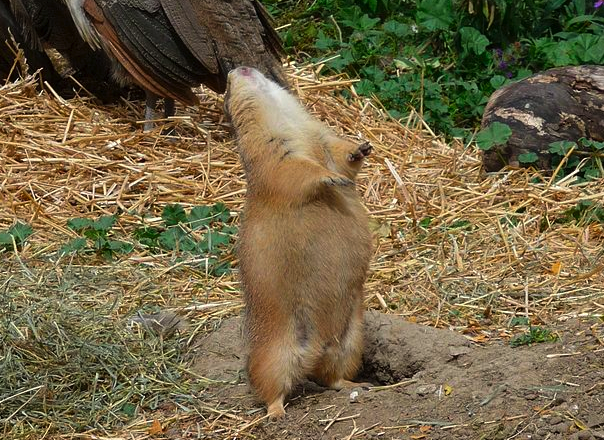The Tales of the Prairie Dog

Constantine Slobodchikoff was born in China to Russian immigrants, and his family moved to San Francisco while he was still quite young. Given his likely exposure to three different languages using three different alphabets, it is no wonder that he took a liking to how we communicate verbally. Now a researcher at Northern Arizona University, Slobodchikoff has spent decades trying to better understand a language few people can comprehend.
Slobodchikoff tries to figure out what prairie dogs are saying to each other.
Prairie dogs are squirrel-like rodents native to North America and are particularly common prowling grassland areas in the United States west of the Mississippi River. They are social animals which build burrows clustered together in communities, typically comprising of their extended families. Prairie dogs are even known to make oral contact with family members — kiss, as it were — as seen here. And, surmises Slobodchikoff, they talk to each other — and in great detail.
Prairie dogs have keen vision which allows them to detect a would-be predator a long distance away. And when one does, it alerts the others in the area with an alarm call, a series of loud “chee” sounds made by contorting its body as seen above. To the untrained ear, these noises seem similar if not identical to each other. To Slobodochikoff and his team, they are anything but.
Slobodochikoff and his team hid among prairie dog habitats and recorded alarm calls, all while keeping a journal about the perceived threat to the rodent sounding the alarm. And what they discovered was that the prairie dogs did not have one singular alarm sound. The calls varied in frequency, tone, and modulation, with different patterns signifying different threats. In a 2002 paper (scanned in as a pdf here), Slobodochikoff asserts that the variations in the noises told other prairie dogs about the size of the predator and how quickly it was approaching the community.
And then, the research team pushed the envelope further. As Slobodochikoff explained to NPR’s Radiolab, he had his team don different shirts and pass through a prairie dog enclave. They tracked the different alarms based on the gender, build, and shirt color of the human intruder.
He found, to his delight, that the calls broke down into groups based on the color of the volunteer’s shirt. “I was astounded,” says Slobodchikoff. But what astounded him even more, was that further analysis revealed that the calls also clustered based on other characteristics, like the height of the human. “Essentially they were saying, ‘Here comes the tall human in the blue,’ versus, ‘Here comes the short human in the yellow,’ ” says Slobodchikoff.
The one thing the prairie dogs could not determine? They did not differentiate between people based on gender.
Bonus fact: While rodents, such as prairie dogs, are generally small, there are a few which grow to the size of small people. The largest rodent (excluding extinct species) is the capybara, vaguely resembling a hairy hippopotamus, as seen here. They are indigenous to Brazil, and can reach lengths of nearly four and a half feet (134 cm) and weigh as much as 150 pounds (66 kg).
From the Archives: Name That Shape: An odd example of how when it comes to language, it’s more than meets the eye.
Related: Slobodochikoff’s book, “Prairie Dogs: Communication and Community in an Animal Society.” Ten reviews, all of five stars. For those looking for something less heady, here’s a plush prairie dog.

Leave a comment